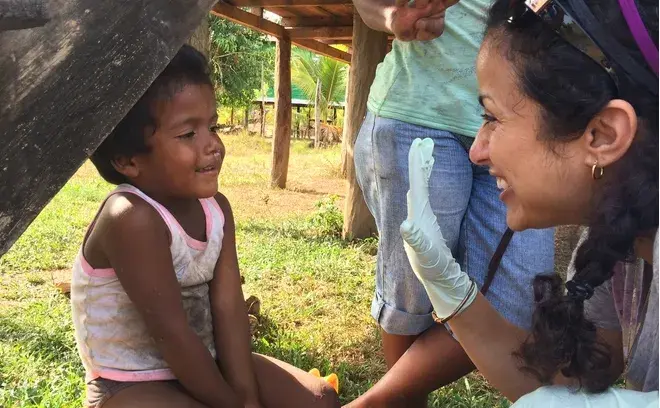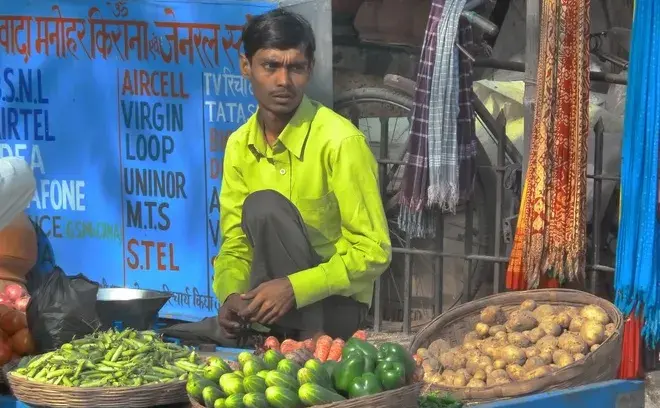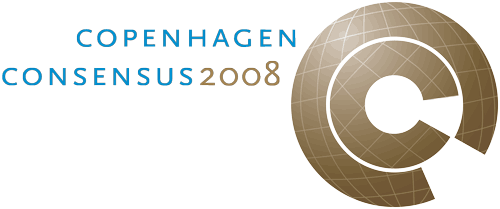Research
For the second meeting of the Copenhagen Consensus, experts looked at ten of the biggest issues facing the planet: air pollution, conflict, diseases, education, global warming, malnutrition and hunger, sanitation and water, subsidies and trade barriers, terrorism, women and development.
Below, you can read outlines of the research papers that the Expert Panel and Youth Forum considered. More background information about the different Copenhagen Consensus papers can be found here.
For more information on the research papers and the background you can check out the book that resulted from the second Copenhagen Consensus: Global Crises, Global Solutions by Cambridge University Press, and Solutions for the World's Biggest Problems by Cambridge University Press.
Air Pollution
Air pollution causes 2.5 million deaths each year, the vast majority in the developing world. Improving both indoor and outdoor air quality - in particularly moving away from indoor cooking fires - would be a cost-effective way to improve quality of life.
While there are many options available for reducing exposure to indoor air pollution, there is limited evidence on their effectiveness in real-life conditions for modeling the cost-benefit of these options. These include behavioral dimensions such as location of cooking area (indoor vs. outdoor; separate indoor area) and location of young children in relation to cooking area (carrying babies while cooking; playing near cooking area).

Conflicts
The first-ever cost-benefit analysis of United Nations peacekeeeping forces finds that spending $850m on a peacekeeeping intervention annually for ten years reduces the risk of violence in conflict-prone nations from nearly 40% to 7%.
Civil wars in small, poor countries cause untold suffering, and half of them are renewed flare-ups of recent conflicts. A single conflict can cost $250 billion or more, takes many years to recover from and can block all other humanitarian interventions.
The report argues that peacekeeping is even more cost-effective when provided in the form of an "over the horizon" security guarantee -- a commitment to send in foreign troops if needed, as Britain does in Sierra Leone. A guarantee could be supplied by the United Nations or the African Union to protect governments which have been properly elected.

Diseases
Health conditions improved markedly throughout the world during most of the second half of the 20th century. Nonetheless major problems remained at the beginning of the 21st century.
Developing countries not only suffer much more than the industrialized world from diseases such as malaria, TB and HIV/AIDS, but also have to face an increasing burden of heart disease, cancer and other non-communicable diseases. Targeted, cost-effective investment in low-cost interventions and capacity building could save about 4 million lives annually and a healthier population, generating additional large indirect economic benefits.
This paper identifies 7 key priority interventions in terms of their cost-effectiveness, the size of the disease burden they address and other criteria.

Education
Building human capital by developing literate populations is a key driver for further economic growth. Interventions to encourage the 14.4 million children who drop out of primary education to complete grade 5 would cost $3.6 billion and be highly cost effective.
This paper reviews the stylized facts regarding the levels of human capital investments and the returns to those investments in developing countries. It shows that 23% of children in developing countries do not complete the fifth grade and of these, 55% started school but dropped out. We argue that eliminating dropouts is the most cost effective way to make progress on the goal of Universal Primary Education. Of the various mechanisms we can use, mechanisms that stimulate schooling demand have the strongest evidence of success to date and are the most cost effective.

Global Warming
Global warming is a major global challenge, which could increase food and water insecurity for many millions of people in the developing world and cause trillions of dollars worth of damage to the world economy. An affordable, cost-effective package of measures would not only start the process of reducing greenhouse gas emissions, but would also enable other Copenhagen Consensus challenges to be properly addressed.
Many people believe this is the world’s biggest problem and solving it should be the top priority. This research shows that even the most extreme mitigation efforts (reducing carbon emissions through taxes) would not guarantee the worst damage of warming.
This is in line with recent IPCC findings – but the paper goes further and fills in the gaps about the mixture of spending that would provide value for money. One solution it proposes is mixing adaptation and mitigation approaches with greater research and development into greener technology resulting in high returns.
Malnutrition and Hunger
Despite significant reductions in income poverty in recent years, undernutrition remains widespread. Recent estimates from UNICEF (2006) are that “one out of every four children under five – or 146 million children in the developing world – is underweight for his or her age”, and that “each year, …undernutrition contributes to the deaths of about 5.6 million children under the age of five”. The undernutrition associated with missing micronutrients in poor quality diets is even more widespread than that indicated by underweight alone.
Undernutrition in turn has negative effects on income and on economic growth. Undernutrition leads to increased mortality and morbidity which lead to loss of economic output and increased spending on health. Poor nutrition means that individuals are less productive (both due to physical and mental impairment), and that children benefit less from education.
Reducing undernutrition is one of the Millennium Goals (Goal 1 aims to eradicate extreme poverty and hunger), and is also a key factor underpinning several others. Achieving goals in primary education, reducing child mortality, improving maternal health, and combating HIV/AIDS, malaria and other diseases all depend crucially on nutrition.

Sanitation and Water
1.1 billion people lack good, clean water supplies, and 2.7 billion have no access to proper sanitation. Sophisticated modern piped water networks are far too expensive for most developing countries, but there are a number of low cost local interventions which are very cost effective and can increase the quality of people's lives significantly.
Consumers in most countries don’t realize that piped water and sanitation networks are expensive, because the true costs are hidden by subsidies. This paper shows that the full cost of piping water to a household is as high as $80 per month – more than most households in rich countries pay and far beyond the means of most families in developing countries. Assuming that the poor use much less water, the monthly cost of conventional network technologies drops to $20 – still a significant outlay.

Subsidies and Trade Barriers
Despite considerable liberalization in recent decades, remaining barriers to trade and migration have negative impacts which particularly affect the world's poorest people. By far the best hope is a successful conclusion to the Doha round, which could boost growth in developing countries by 1.4% or more annually and indirectly help tackle many of the other challenges.
The net economic and social benefits of reducing most government subsidies and opening economies to trade are enormous relative to the costs of adjustment to such policy reform. While barriers to trade in most goods and some services including capital flows have been reduced considerably over the past two decades, many remain.
Such policies harm most the economies imposing them, but the worst of the merchandise barriers (in agriculture and textiles) are particularly harmful to the world’s poorest people, as are barriers to worker migration across borders. Addressing this challenge would therefore also assist in meeting several of the other challenges identified in this project including malnutrition, disease, poor education and air pollution.
This paper focuses on how costly those anti-poor trade policies are, and examines possible strategies to reduce remaining distortions. Three opportunities in particular are addressed.
The most beneficial prospect is the Doha Development Agenda of the World Trade Organization (WTO). If that proves to be too difficult politically to bring to a conclusion in the near future, the other two prospects considered are sub-global preferential reforms such as the Free Trade Area of the Americas (FTAA) initiative, and the freeing up the international movement of workers.

Terrorism
Unlike many challenges, there is no solution to transnational terrorism because it is a cost-effective tactic of the weak against a more formidable opponent. Very cheap terrorist attacks can create significant anxiety – the material cost of a suicide attack may be as little as $150 and on average kills twelve people (Hoffman, 2006; Pape, 2006). Some rogue nations utilize terrorism as an inexpensive means to destabilize or harm other nations. Even effective antiterrorism campaigns will only temporarily work until the terrorists either find new leaders or sources of resources. Even if a terrorist group is annihilated, a new group may surface for some other cause. Thus, terrorism can be put into remission but it cannot be eliminated. Granting terrorist concessions will signal to future terrorists that terrorism pays, so that compromise may fuel future terrorist campaigns (Sandler and Arce, 2003).
Three of the five “solutions” proposed here – business-as-usual, increased proactive responses, and enhanced defensive measures – have very adverse benefit-cost ratios under a wide range of scenarios, even when the most promising assumptions are invoked. The most effective solutions are the cheapest, but they must overcome the greatest obstacles that require either greater international cooperation or more sensitive and farsighted policymaking. Such qualities seldom characterize rich countries’ actions.
Women and Development
Over the past three decades gender issues have increasingly gained prominence on the development agenda. More attention is being given to the plight of poor and disadvantaged women in developing countries, and to the unfinished gender agenda in more developed countries.
But despite large strides in many countries, too many women continue to suffer discrimination, with negative impacts on the health and wellbeing of themselves and their children, as well as the broader economy. Supporting girls' education in South Asia and sub-Saharan Africa, improving reproductive health, providing microfinance and giving women and greater political voice would all repay the investment many times over, and benefit both the current and future generations.


